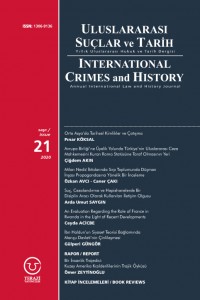Öz
In the aftermath of 1991, various identities that have been redefined in the Central Asian republics cause the emergence of an environment of conflict. In this article, the phenomenon of ‘identity’ is analyzed from an historical perspective and in terms of its impact on the post-Soviet conflicts. In this framework, in the first part, the specific importance given to the identity of ‘nation’ is mentioned, followed by the two separate sections on ‘supra-national’ and ‘sub-national’ identities. As the various identities in the region are intertwined and multi-layered, it is important to understand how in the last thirty years these identities interact and overlap with and differentiate from each other. In the post-Soviet era, it is observed that these identities are either the direct reason of or prepare a conducive environment for conflicts that emerge between the political elites and Central Asian people as well as among the Central Asians themselves. It is clear that the people of the region, both in the short and in the long run, will continue to see the results of those conflicts that emerge due to identity politics or conflicts based on identity. At the roots of many conflicts seen in the region after 1991 lie the continuous formation and reformation of identities with the purposes of serving different goals. Without taking into account such developments, it will not be possible to understand conflicts based on identity.
Anahtar Kelimeler
Kaynakça
- Adams, Laura. The Spectacular State: Culture and National Identity in Uzbekistan, ABD: Duke University Press, 2010.
- Aitken, Jonathan. Nazarbayev and the Making of Kazakhstan, New York: Continuum, 2009.
Öz
Kaynakça
- Adams, Laura. The Spectacular State: Culture and National Identity in Uzbekistan, ABD: Duke University Press, 2010.
- Aitken, Jonathan. Nazarbayev and the Making of Kazakhstan, New York: Continuum, 2009.
Ayrıntılar
| Birincil Dil | Türkçe |
|---|---|
| Bölüm | Araştırma Makaleleri |
| Yazarlar | |
| Yayımlanma Tarihi | 2 Aralık 2020 |
| Yayımlandığı Sayı | Yıl 2020 Sayı: 21 |


